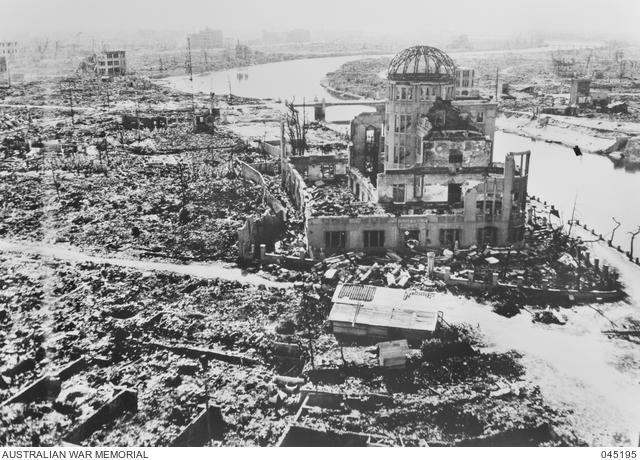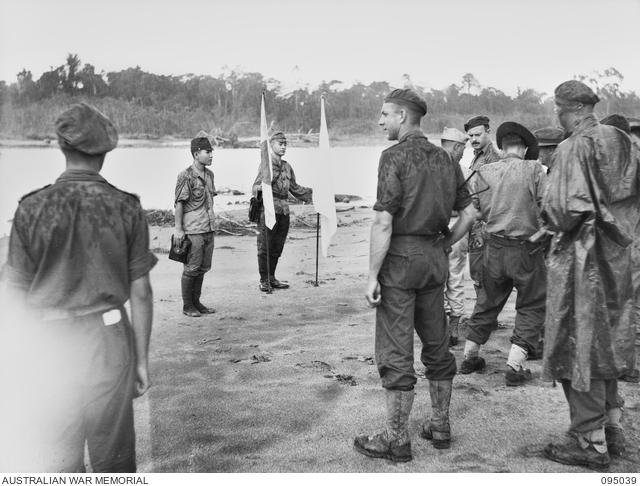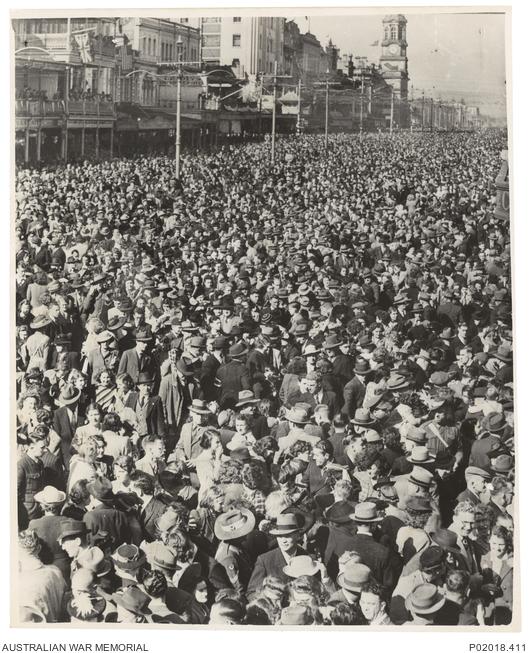'Victory in the Pacific!' Photographic Exhibition
Photographic Exhibition
Level 2
Friday, 1 August 2025 - Sunday, 12 October 2025
The temporary photographic exhibition, Victory in the Pacific!, is a series of photographs that capture the joy and celebration, coupled with the sombre commemoration which seized Australians, as the nation waved goodbye to The Second World War and welcomed the idea of peace.
Join us as we commemorate the 80th anniversary of the end of the Second World War through a series of special events and public programs.
"Fellow citizens, the war is over. The Japanese Government has accepted the terms of surrender imposed by the Allied Nations and hostilities will now cease".
Australian Prime Minister Ben Chifley

A crowd gathered in Martin Place, Sydney, on 15 August 1945, with celebrations including a march of 50,000 servicemen and servicewomen, veterans and auxiliary personnel, and a thanksgiving service in the Domain. An estimated crowd of a million people thronged to the city to participate in celebrations. Photographer unknown, 113810

(Left to right): Betty Williams, Lois Anne Martin and possibly Carmel O’Connor, from the Kokoda factory, Abbotsford, celebrate VP Day in Melbourne. Martin knitted the vest in anticipation of the Allies’ victory and wore it on 15 August 1945. She never wore it again. The vest is on display in the permanent Second World War galleries. Photographer unknown, P02018.226


Some of the 8th Australian Division captured in 1942 and released from Naoetsu prisoner of war camp and brought to Yokohama, Japan, in preparation for their return to Australia, September 1945. The flag was handmade from pieces of coloured parachutes used to drop supplies to prisoners by Allied aircraft. Standing in front of the flag is believed to be Aboriginal serviceman Private Frederick Beale. His brother, Private George Beale died while a prisoner in Japan in 1943. Photographer unknown, 019178

Left to right: Australian army nurses Captain Kay Parker and Lieutenants Lorna Whyte, Daisy Keast and Mavis Cullen are met by family and friends at Mascot, Sydney, 13 September 1945. They had been captured by the Japanese in Rabaul in January 1942 and taken to Japan as prisoners of war. Photographer unknown, 115953

Graves at No. 2 Cemetery at the prisoner of war camp at Sandakan, north-east Borneo, 27 October 1945. Only six of the 2,500 Australian and British prisoners of war sent to Sandakan in 1942 survived the war. Most were killed during 1945 at Sandakan, during the death marches, or at Ranau. Photograph by Sergeant Frank Burke. 120495

New Guineans working with an Australian war graves unit unload caskets from a battlefield cemetery at Maprik for reburial in the Wewak war cemetery at Cape Moem, 23 October 1945. This casket and the remains of Australians killed in New Guinea were later reinterned in Lae War Cemetery. Photographer unknown, 098146

The Parker siblings from Bundarra, NSW, served during the war. Corporal June Parker, Gunner Jack Parker and Lieutenant Nance Hopton (née Parker) were discharged in 1946. Naval Cadet Robert Parker later joined the army and travelled to Japan with the British Commonwealth Occupation Force before serving in the Korean War. Photographer unknown, P03874.001


















